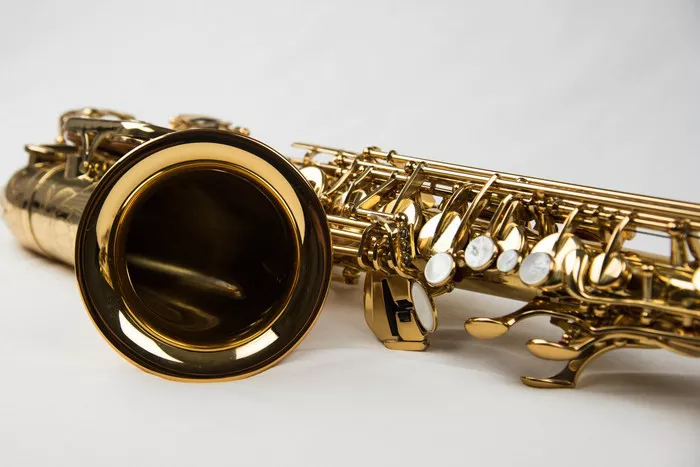The saxophone, with its sultry tones and dynamic presence, has become synonymous with various music genres, from jazz and classical to pop and rock. However, the question often arises: Is the saxophone a traditional instrument? In this exploration, we will delve into the history, evolution, and diverse roles of the saxophone to determine its place in the realm of traditional instruments.
Birth of the Saxophone: A 19th Century Innovation
The saxophone was invented by Adolphe Sax in the early 1840s, marking its debut during a period of musical experimentation and innovation. As a single-reed woodwind instrument with a brass body, the saxophone was intended to bridge the gap between woodwind and brass instruments, offering a unique sonic palette. Its introduction into the world of music marked a departure from traditional instrument classifications, setting the stage for its distinctive identity.
Jazz Roots: Saxophone’s Pivotal Role in the Evolution of Jazz
The saxophone’s significant role in the development of jazz during the early 20th century has cemented its place in musical history. Jazz, known for its improvisational nature and expressive qualities, found the perfect ally in the saxophone. From the energetic solos of pioneers like Sidney Bechet and Coleman Hawkins to the lyrical expressions of Lester Young and the avant-garde explorations of John Coltrane, the saxophone became an integral voice in the jazz tradition.
Classical Acceptance: Saxophone in Orchestral and Chamber Music
While initially met with skepticism in the classical music world, the saxophone gradually gained acceptance and found its place in orchestral and chamber settings. Composers like Maurice Ravel and Claude Debussy incorporated the saxophone into their compositions, expanding its presence beyond the traditional woodwind and brass ensembles. Today, the saxophone is a standard member of many classical orchestras and chamber groups.
Traditional Settings: The Saxophone in Military and Brass Bands
The saxophone’s presence in military and brass bands further solidifies its role in traditional musical settings. Adopted by military bands around the world, the saxophone’s versatility and projection made it an ideal choice for outdoor performances. Its inclusion in brass bands contributed to a rich ensemble sound, highlighting its adaptability across various musical genres while maintaining ties to traditional band instrumentation.
Pop and Rock Icons: Saxophone’s Influence on Popular Music
The saxophone’s influence extends into the realm of popular music, with iconic solos and melodic lines gracing countless hit songs. From the soulful sounds of Motown, featuring artists like Junior Walker, to the rock-infused saxophone solos of artists like Clarence Clemons with Bruce Springsteen’s E Street Band, the saxophone has left an indelible mark on the sonic landscape of popular music.
Contemporary Collaborations: Saxophone’s Ongoing Evolution
In contemporary music, the saxophone continues to evolve and adapt, participating in diverse collaborations across genres. Whether featured in electronic dance music (EDM) tracks, collaborating with hip-hop artists, or contributing to experimental and avant-garde projects, the saxophone’s versatility allows it to transcend traditional boundaries and remain relevant in ever-changing musical landscapes.
Saxophone as a Bridge: Bridging Musical Traditions
One of the unique qualities of the saxophone is its ability to serve as a bridge between musical traditions. Its dual identity as both a woodwind and a brass instrument positions it as a versatile connector, linking the worlds of classical and jazz, traditional and contemporary. This bridging capacity allows the saxophone to participate in a wide range of musical expressions while maintaining a connection to its historical roots.
Diverse Voices: The Saxophone in World Music Traditions
The saxophone’s adaptability has also led to its incorporation into various world music traditions. Musicians from different cultural backgrounds have embraced the saxophone, infusing it with their unique styles and expressions. From Afrobeat to Latin jazz, the saxophone’s ability to assimilate diverse influences makes it a dynamic participant in the global tapestry of musical traditions.
Challenges to Tradition: Avant-Garde and Experimental Exploration
As a tool for sonic exploration, the saxophone has ventured into avant-garde and experimental realms. Musicians like Ornette Coleman and John Zorn have pushed the boundaries of traditional saxophone playing, experimenting with extended techniques, unconventional compositions, and new sonic possibilities. This willingness to challenge tradition and embrace innovation keeps the saxophone at the forefront of musical evolution.
See Also: The Saxophone’s Role in Solo Performances: A Simple Guide
Conclusion
In conclusion, the saxophone’s journey from its invention in the 19th century to its diverse roles in jazz, classical, popular music, and beyond reflects its complex relationship with tradition. While the saxophone may not fit neatly into the conventional definition of a traditional instrument, its ability to adapt, bridge genres, and explore new sonic territories positions it as a dynamic force in the ever-evolving world of music. The saxophone’s legacy is not just rooted in tradition but is also defined by its capacity to break new ground, making it a timeless and enigmatic voice in the vast symphony of musical expression.


